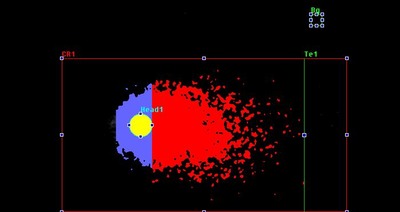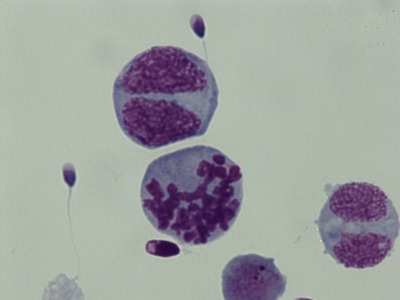Oxidative stress occurs when the levels of free radicals such as Reactive Oxygen Species (ROS) and Reactive Nitrogen Species overcome the levels of antioxidants. All cells make ROS, and all have complex systems of antioxidants defending against damage. Oxidative stress may lead to DNA fragmentation, lipid peroxidation (membrane damage) or protein modifications, all of which will compromise sperm function and can lead to sperm or embryo death.
Semen has high levels of antioxidants (both specific enzymes and simple compounds like amino acids, vitamin E and vitamin C), so sperm are usually protected while in semen. As soon as sperm are separated from the seminal plasma (at the cervix, or during sperm preparation in the lab), they are more susceptible to oxidative stress. This is especially true when there are numerous white blood cells (WBCs: neutrophils or PMNs, and macrophages) present.
We estimate oxidative stress by measuring ROS and antioxidant capacity in semen and purified sperm. The expected outcome is that diluted semen is capable of scavenging (preventing) high ROS even under conditions that stimulate ROS formation, and that purified sperm are not making high levels of ROS. In our full assay, we also measure ROS production by the immature germ cell and white blood cell fractions of separated semen cells.
ASSAYS:
Screening ROS & TAC: A quick and less expensive test for the ROS production by all cells in the semen (sperm, WBCs, immature germ cells) and the ability of diluted semen to suppress elevated ROS (Total Antioxidant Capacity, TAC).
ROS & TAC: We separate fractions containing purified sperm from those with WBCs to determine the source of high ROS production.


